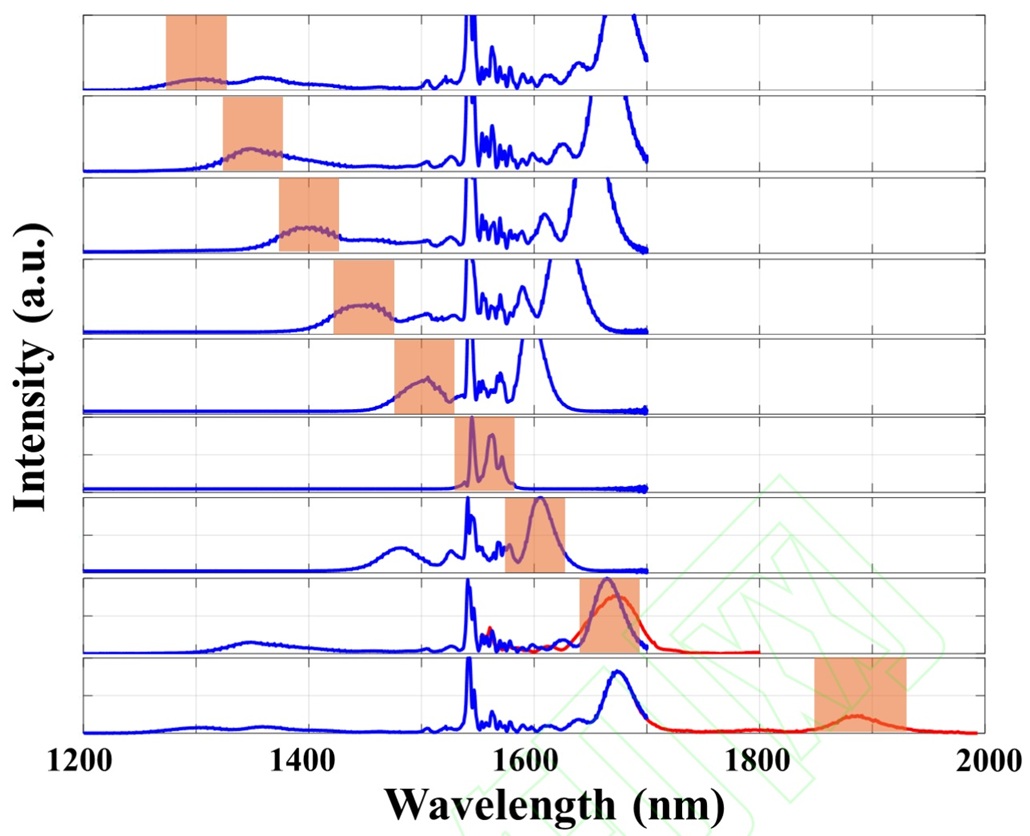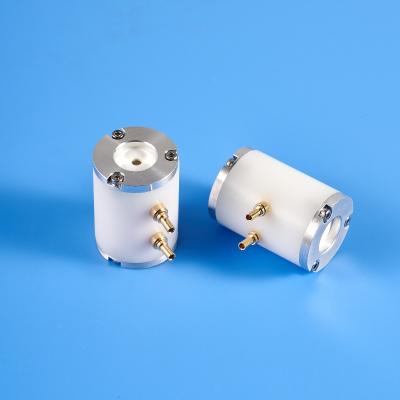High-Power Mid-Infrared Ultrafast Sources at 2 - 5μm Based on Dual-Wavelength Source - Part 6
3 Difference frequency generation of high-power mid-infrared ultrafast light sources
3.1 High-power tunable dual-wavelength ultrafast fiber laser
The other pulse train serves as the seed for the erbium-doped CPA system. After fiber broadening, two-stage single-mode fiber amplification, one-stage multi-mode fiber main amplification, and grating compression, the output spectrum is shown in Figure 5(c). Due to the gain narrowing effect of the main amplifier, the full width at half maximum (FWHM) of the output spectrum is 12 nm, with a center wavelength of 1560 nm, and exhibits a slight modulation structure. The autocorrelation curve in Figure 5(d) is relatively smooth overall, and after hyperbolic secant fitting, the pulse FWHM is 290 fs, corresponding to a peak power of 0.47 MW.
Fig.6. SESS method-based spectrum broadening results
To obtain high-energy tunable signal pulses in the 1.3-1.9 μm range by using PPLN (www.wisoptic.com), this paper utilizes the Spectral Envelope Shaping System (SESS) technique for spectral broadening. The high-energy 1.55 μm pulses from a dual-wavelength laser are first modulated in energy using a half-wave plate and a polarizing beam splitter (PBS, www.wisoptic.com), and then coupled into an 8.5 cm long dispersion-shifted fiber optic cable via an aspheric lens. After spectral broadening within the fiber, the beam is collimated by another aspheric lens, and an optical filter removes the spectral side lobes, resulting in a tunable, high-energy femtosecond pulse. By adjusting the angle of the half-wave plate and gradually increasing the pulse energy coupled into the fiber, the pulse spectrum broadens symmetrically to around 1.3-1.9 μm (as shown in Figure 6). It is worth noting that due to dispersion, the rightmost side lobe of the SESS spectrum broadens to approximately 1.675 μm. Further increasing the input pulse energy will generate a side lobe around 1.9 μm. Using a 50 nm bandwidth bandpass filter to remove the side lobes yields a femtosecond pulse with an average power of 200-400 mW and a tunable wavelength between 1.3 μm and 1.6 μm. Using a 1.65 μm long-pass filter to remove the side lobes at 1.65 μm and 1.9 μm results in a total average power of 350 mW; the average power of the side lobe at 1.9 μm is estimated to be around 50 mW.




